UPMC: Medicine Grand Rounds – 10/14/25
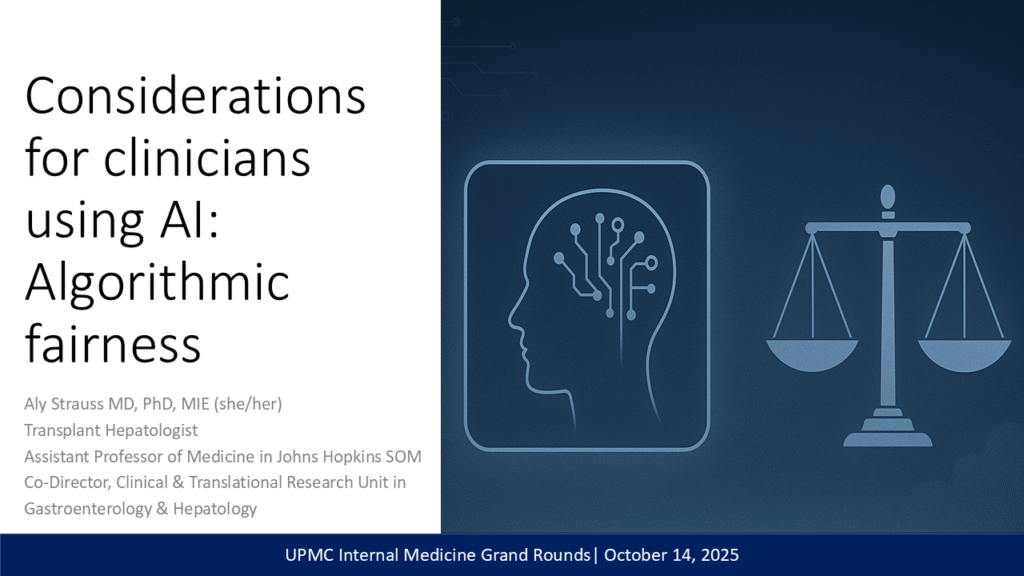
- Barocas S, Hardt M, Narayanan A. Fairness and Machine Learning.; 2019.
- Bhagwat AM, Ferryman KS, Gibbons JB. Mitigating algorithmic bias in opioid risk-score modeling to ensure equitable access to pain relief. Nat Med. 2023;29(4):769-770. doi:10.1038/s41591-023-02256-0
- Chen F, Wang L, Hong J, Jiang J, Zhou L. Unmasking bias in artificial intelligence: a systematic review of bias detection and mitigation strategies in electronic health record-based models. J Am Med Inform Assoc. 2024;31(5):1172-1183. doi:10.1093/jamia/ocae060
- Collins GS, Moons KGM, Dhiman P, et al. TRIPOD+AI statement: updated guidance for reporting clinical prediction models that use regression or machine learning methods. BMJ. 2024;385:e078378. doi:10.1136/bmj-2023-078378
- Daneshjou R, Vodrahalli K, Novoa RA, et al. Disparities in dermatology AI performance on a diverse, curated clinical image set. Sci Adv. 2022;8(32):eabq6147. doi:10.1126/sciadv.abq6147
- Ferryman K, Goldenberg AJ, Sabatello M. Moving to equity in the all of us research program. Am J Bioeth. 2024;24(3):115-117. doi:10.1080/15265161.2024.2307255
- Ferryman K, Mackintosh M, Ghassemi M. Considering Biased Data as Informative Artifacts in AI-Assisted Health Care. N Engl J Med. 2023;389(9):833-838. doi:10.1056/NEJMra2214964
- Gianfrancesco M, Tamang S, Yazdany J, Schmajuk G. Potential biases in machine learning algorithms using electronic health record data. JAMA Intern Med. 2018;178(11):1544-1547. doi:10.1001/jamainternmed.2018.3763
- Hardt M, Price E, Srebro N. Equality of opportunity in supervised learning. In: ; 2016. https://papers.neurips.cc/paper/6374-equality-of-opportunity-in-supervised-learning.pdf
- Mehrabi N, Morstatter F, Saxena N, Lerman K, Galstyan A. A Survey on Bias and Fairness in Machine Learning. ACM Computing Surveys. 2021;54(6):1-35. doi:10.1145/3457607
- Nadarzynski T, Knights N, Husbands D, et al. Achieving health equity through conversational AI: A roadmap for design and implementation of inclusive chatbots in healthcare. PLOS Digit Health. 2024;3(5):e0000492. doi:10.1371/journal.pdig.0000492
- Obermeyer Z, Powers B, Vogeli C, Mullainathan S. Dissecting racial bias in an algorithm used to manage the health of populations. Science. 2019;366(6464):447-453. doi:10.1126/science.aax2342
- Rajkomar A, Hardt M, Howell MD, Corrado G, Chin MH. Ensuring Fairness in Machine Learning to Advance Health Equity. Ann Intern Med. 2018;169(12):866-872. doi:10.7326/M18-1990
- Saxena NA, Huang K, DeFilippis E, Radanovic G, Parkes DC, Liu Y. How Do Fairness Definitions Fare? Examining Public Attitudes Towards Algorithmic Definitions of Fairness. In: Proceedings of the 2019 AAAI/ACM Conference on AI, Ethics, and Society. AIES ’19. Association for Computing Machinery; 2019:99-106. doi:10.1145/3306618.3314248
- Strauss AT, Sidoti CN, Sung HC, et al. Artificial intelligence-based clinical decision support for liver transplant evaluation and considerations about fairness: A qualitative study. Hepatol Commun. 2023;7(10). doi:10.1097/HC9.0000000000000239
- AIM-AHEAD. AIM-AHEAD. Accessed February 24, 2025. https://www.aim-ahead.net/
- Artificial Intelligence-Enabled Device Software Functions: Lifecycle Management and Marketing Submission Recommendations. Draft Guidance for Industry and Food and Drug Administration Staff. Food and Drug Administration; 2025.
Duke Southeast Regional Transplant Summit – 10/11/25
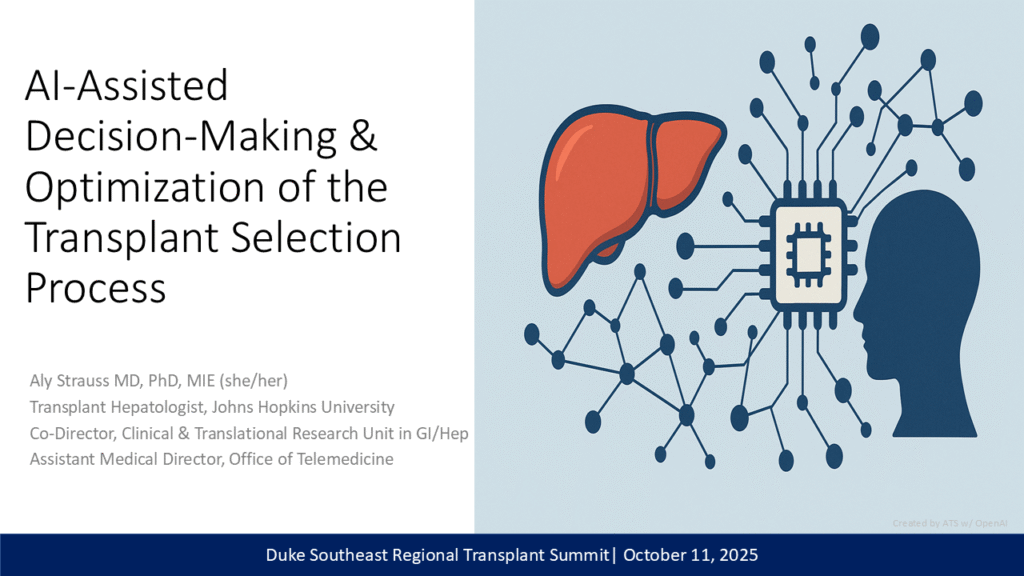
- Strauss AT, Caicedo JC, Welsh W, et al. Process variation in liver, kidney, and pancreas transplantation: A multicenter evaluation from the consortium for the holistic assessment of risk in transplant. Transplant Direct. 2025;11(9):e1850.
- Spann A, Strauss AT, Davis SE, Bhat M. The role of artificial intelligence in chronic liver diseases and liver transplantation. Gastroenterology. 2025;169(3):456-470.
- Zaribafzadeh H, Henson JB, Chan NW, et al. Development of a natural language processing algorithm to extract social determinants of health from clinician notes. Am J Transplant. 2025;0(0). doi:10.1016/j.ajt.2025.02.019
- Altaf A, Mustafa A, Dar A, et al. Artificial intelligence-based model for the recurrence of hepatocellular carcinoma after liver transplantation. Surgery. 2024;176(5):1500-1506.
- Ascher-Bartlett JM, Bangerth S, Jordan S, et al. CHALF Score: A Novel Tool to Rapidly Risk Stratify Children in Need of Liver Transplant Evaluation During Acute Liver Failure. Transplantation. 2024;108(4):930-939.
- Brahmania M, Kuo A, Tapper EB, et al. Quality measures in pre-liver transplant care by the Practice Metrics Committee of the American Association for the Study of Liver Diseases. Hepatology. Published online March 27, 2024:10.1097/HEP.0000000000000870.
- Vuppalanchi R, Are V, Telford A, et al. A composite score using quantitative magnetic resonance cholangiopancreatography predicts clinical outcomes in primary sclerosing cholangitis. JHEP Rep. 2023;5(10):100834.
- Strauss AT, Sidoti CN, Sung HC, et al. Artificial intelligence-based clinical decision support for liver transplant evaluation and considerations about fairness: A qualitative study. Hepatol Commun. 2023;7(10). doi:10.1097/HC9.0000000000000239
- Ferryman K, Mackintosh M, Ghassemi M. Considering Biased Data as Informative Artifacts in AI-Assisted Health Care. N Engl J Med. 2023;389(9):833-838.
- Au J, Falloon C, Ravi A, Ha P, Le S. A beta-prototype chatbot for increasing health literacy of patients with decompensated cirrhosis: Usability study. JMIR Hum Factors. 2023;10(1):e42506.
- Chen Y, Clayton EW, Novak LL, Anders S, Malin B. Human-Centered Design to Address Biases in Artificial Intelligence. J Med Internet Res. 2023;25:e43251.
- Strauss AT, Sidoti CN, Purnell TS, et al. Multicenter study of racial and ethnic inequities in liver transplantation evaluation: Understanding mechanisms and identifying solutions. Liver Transpl. 2022;28(12):1841-1856.
- Saxena NA, Huang K, DeFilippis E, Radanovic G, Parkes DC, Liu Y. How Do Fairness Definitions Fare? Examining Public Attitudes Towards Algorithmic Definitions of Fairness. In: Proceedings of the 2019 AAAI/ACM Conference on AI, Ethics, and Society. AIES ’19. Association for Computing Machinery; 2019:99-106.
- Barocas S, Hardt M, Narayanan A. Fairness and Machine Learning.; 2019.
- Rajkomar A, Hardt M, Howell MD, Corrado G, Chin MH. Ensuring Fairness in Machine Learning to Advance Health Equity. Ann Intern Med. 2018;169(12):866-872.
- Volk ML, Biggins SW, Huang MA, Argo CK, Fontana RJ, Anspach RR. Decision making in liver transplant selection committees: a multicenter study. Ann Intern Med. 2011;155(8):503-508.
DDW – 5/5/25
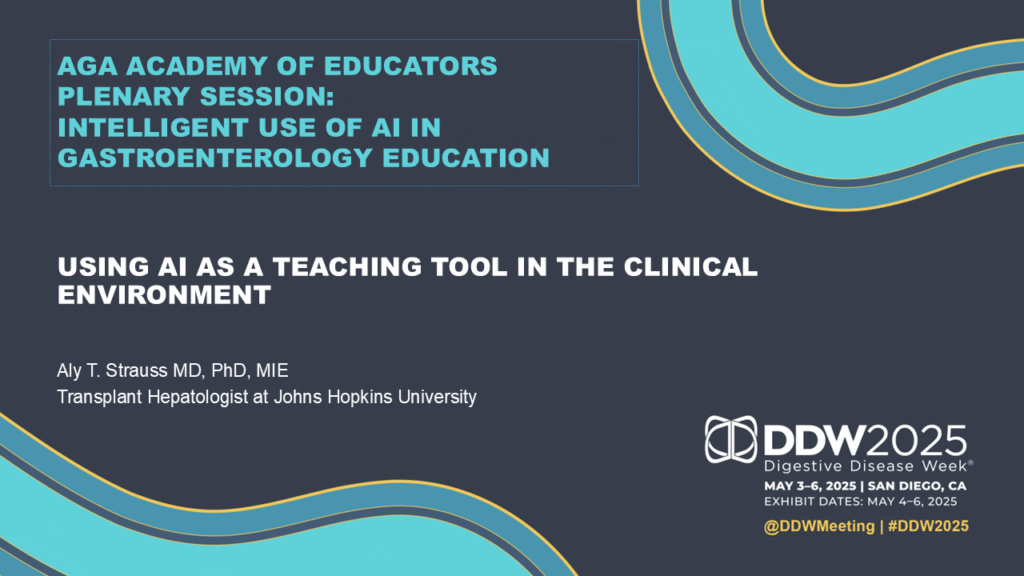
AST World Transplant Congress – 8/4/25
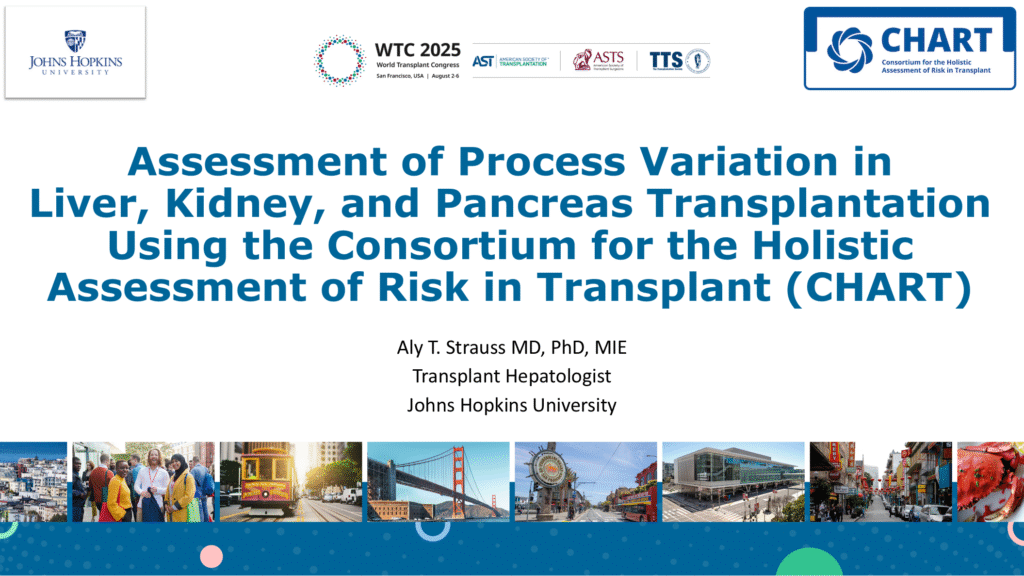
Johns Hopkins DOM Grand Rounds – 2/25/25
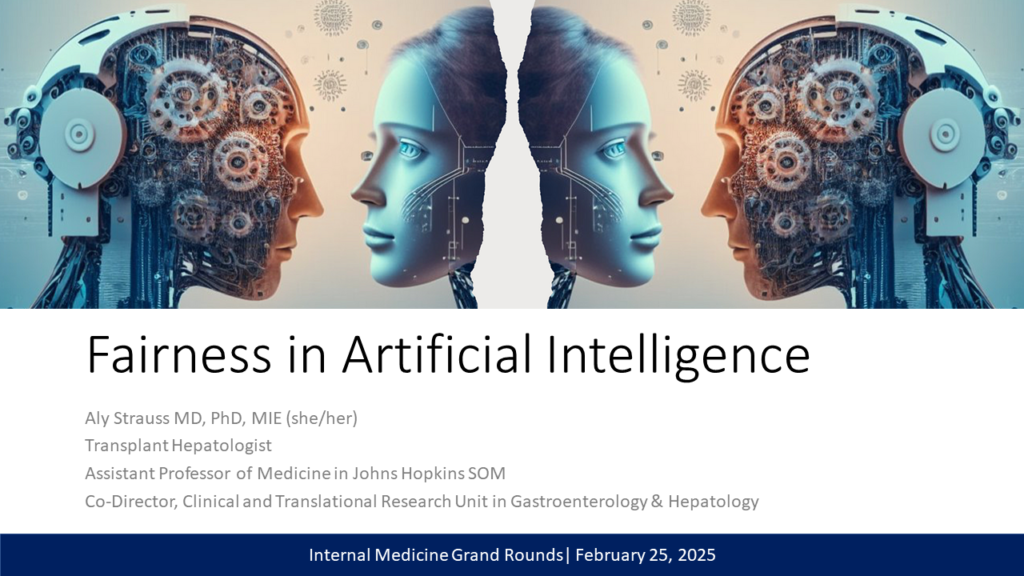
Tulane DREAM Symposium – 12/6/24

AASLD TLM – 11/2024
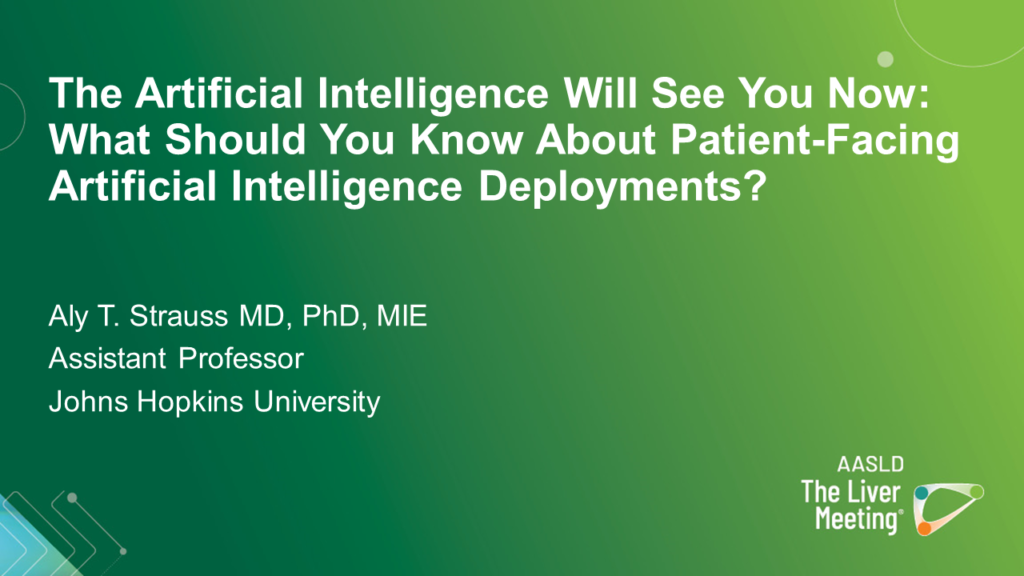
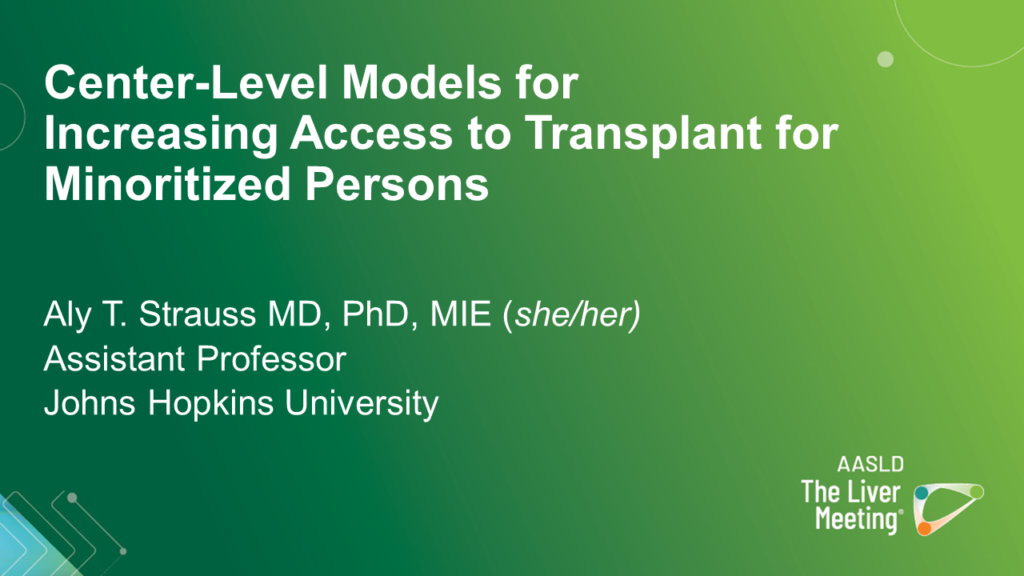
AASLD LGBTQ+ Task Force Webinar – 6/2024
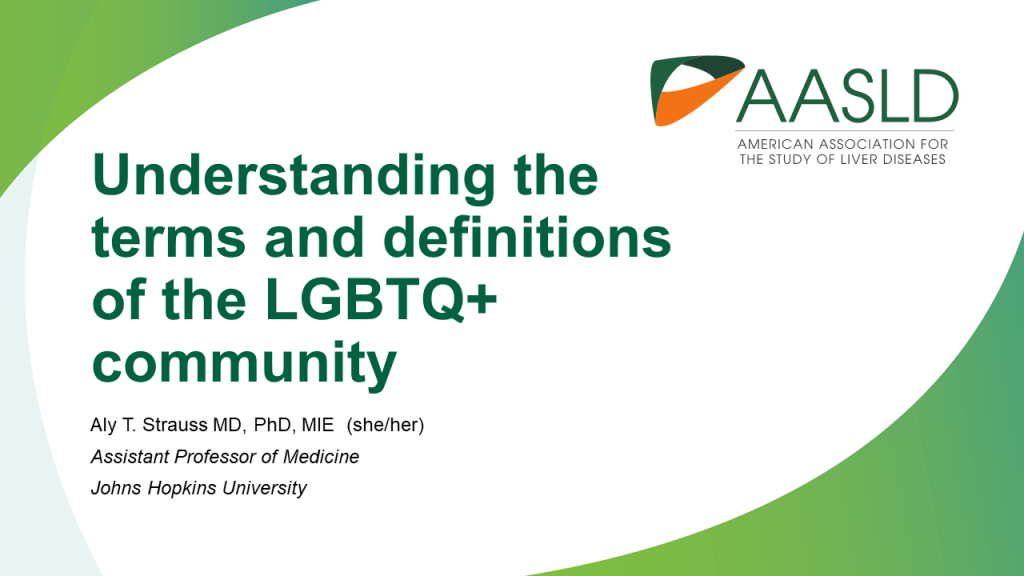
- Lee TH, Paul S, Kahn J. Model for End-Stage Liver Disease 3.0: One step forward to mitigate sex and gender disparities in liver transplant. Am J Transplant. 2024;24(1):145-146. doi:10.1016/j.ajt.2023.09.013
- Glossary of Terms. Human Rights Campaign. https://www.hrc.org/resources/glossary-of-terms
- GLAAD Media Reference Guide – 11th Edition. GLAAD | GLAAD rewrites the script for LGBTQ acceptance. Published February 21, 2022. https://glaad.org/reference/
- New York City Department of Social Services Human Resources Administration. Gender Pronouns. Published 2017. https://www.nyc.gov/assets/hra/downloads/pdf/services/lgbtqi/Gender%20Pronouns%20final%20draft%2010.23.17.pdf
- Stryker S. Transgender History, Second Edition. 2nd ed. Seal Press; 2017.
- Pickett B. Homosexuality. Published August 6, 2002. https://plato.stanford.edu/entries/homosexuality/
- Al-Mamun M, Hossain MJ, Alam M, Parvez MS, Dhar BK, Islam MR. Discrimination and social exclusion of third-gender population (Hijra) in Bangladesh: A brief review. Heliyon. 2022;8(10):e10840. doi:10.1016/j.heliyon.2022.e10840
- Thurston I. The History of Two-Spirit Folks. The Indigenous Foundation. Published June 29, 2022. Accessed June 25, 2024. https://www.theindigenousfoundation.org/articles/the-history-of-two-spirit-folks
- Gender Unicorn. Published August 13, 2017. Accessed June 25, 2024. https://transstudent.org/gender/
- Henningham M. Nowhere to bi: Barriers to belonging in the broader LGBTQ+ community for Aboriginal bi+ people in Australia. J Lesbian Stud. 2024;28(1):63-83. doi:10.1080/10894160.2023.2233339
DDW – 5/2024
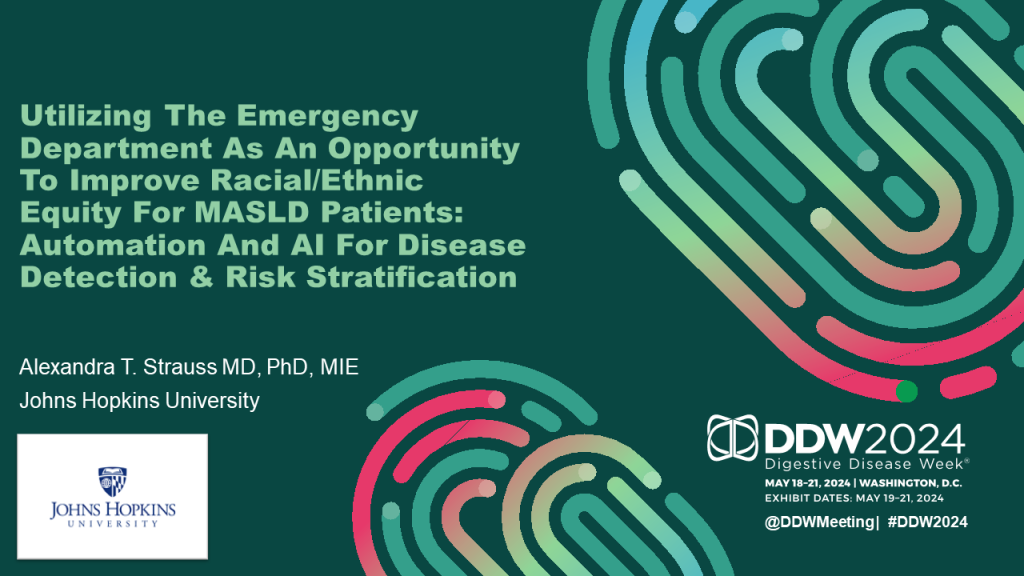
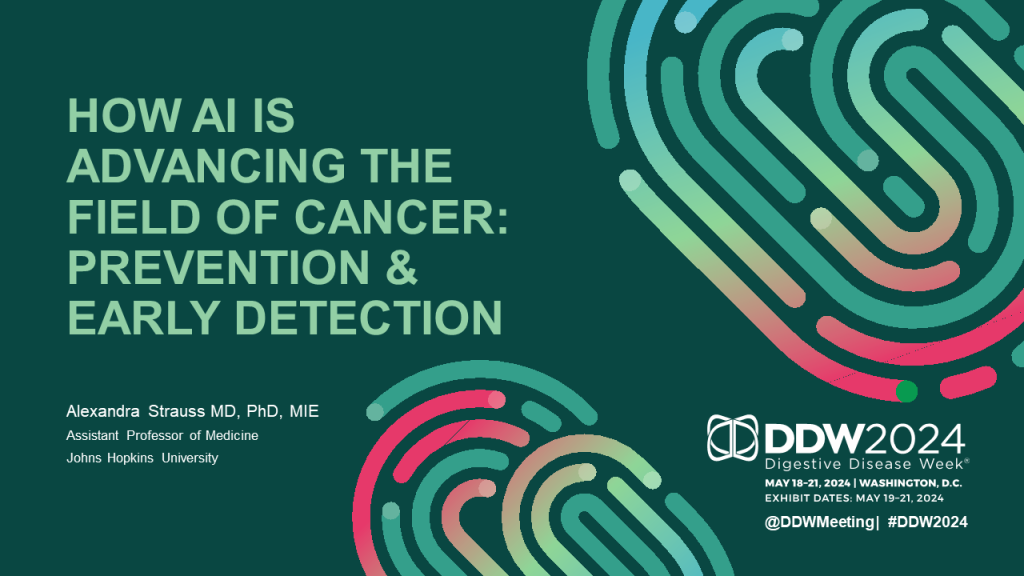
Post-Graduate Course